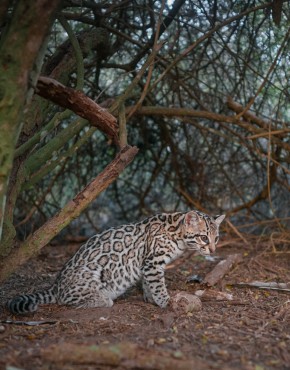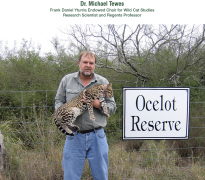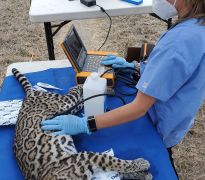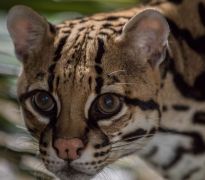
Feline Research Program

Mission
The mission of the Feline Research Program is to conduct basic and applied research on wild cats that contributes to understanding their biology, management and conservation throughout South Texas and other landscapes around the world.
COMMITMENT
Wild cat research has been ongoing since the inception of the Caesar Kleberg Wildlife Research Institute, and under this program, it currently represents one of the leading efforts directed toward the study of wild cats in the world. The quarter-century history of wild cat research and the long-term commitment to multi-year studies demonstrates the critical role the Feline Research Program has played in unraveling the ecological mysteries of these elusive and complex predators.
Wild cats have captured the imagination of humans since the beginning of time. They are products of evolutionary forces that have worked on their carnivore ancestors to make cats one of the most efficient predators in the animal kingdom. Little is known about many species because of the difficulties researchers experience when studying the cat family. In addition, many populations are now threatened with extinction because of recent pressures from humans. The Feline Research Program at Texas A&M University-Kingsville is dedicated to conducting research on wild cats to gain understanding of their ecology, behavior, and conservation genetics, and apply knowledge gained to the recovery of wild populations. We have been dedicated to wild cat research for over 35 years. This website describes our current research activities. We invite you to explore it.



